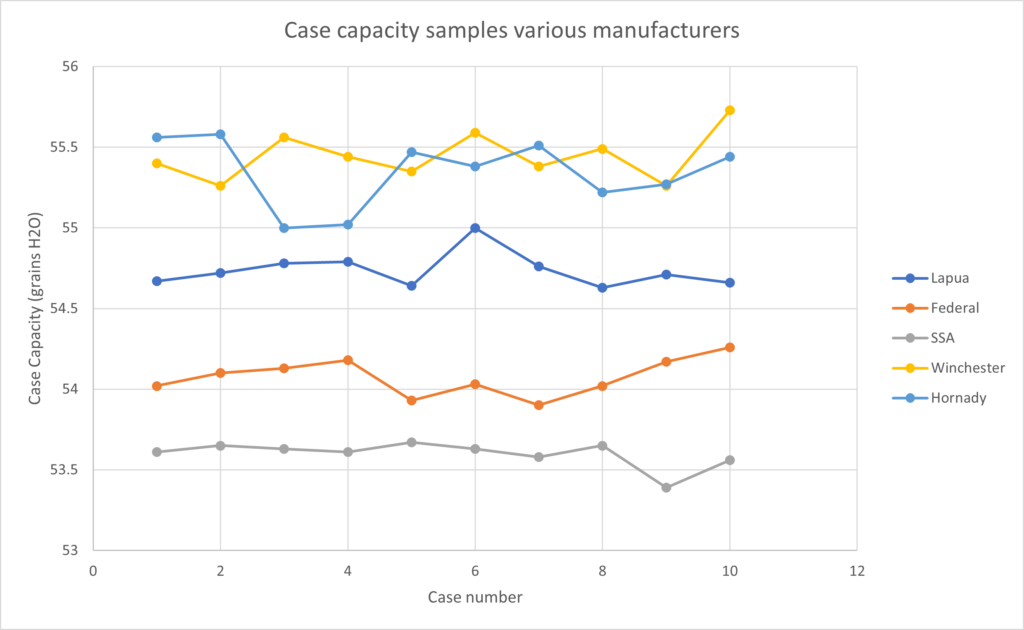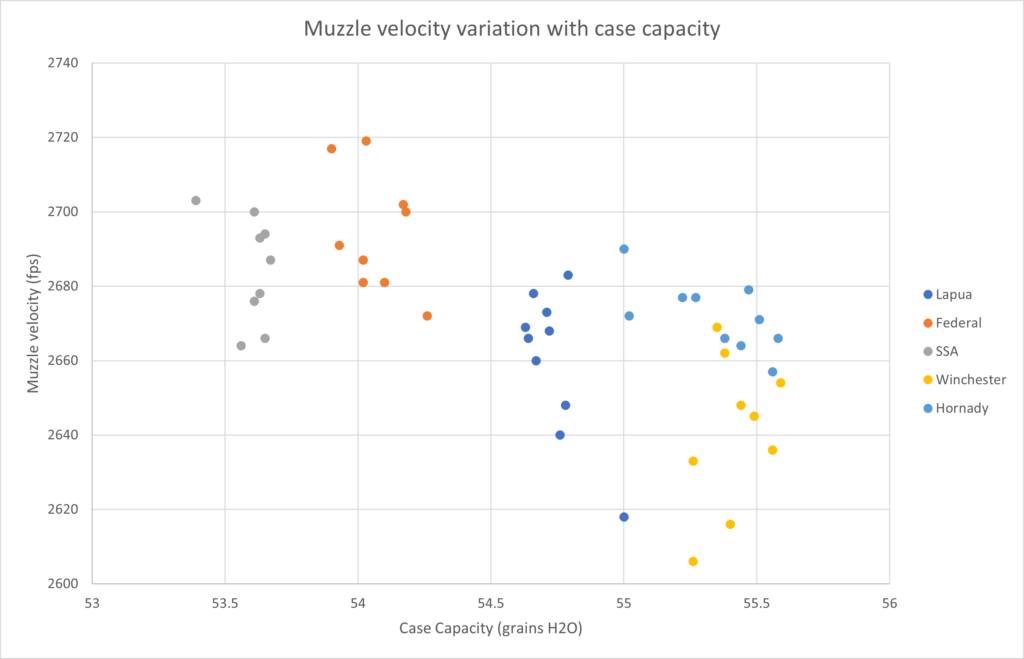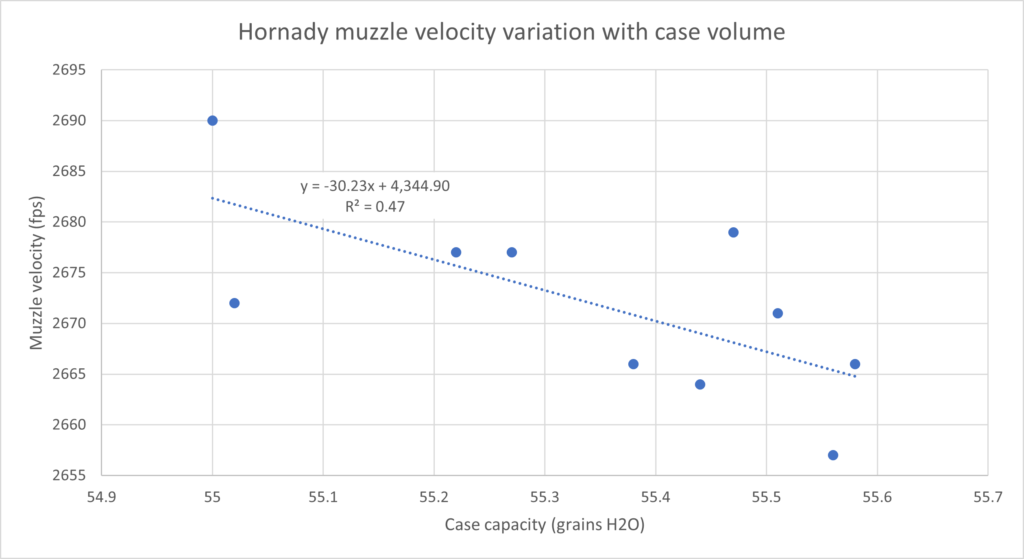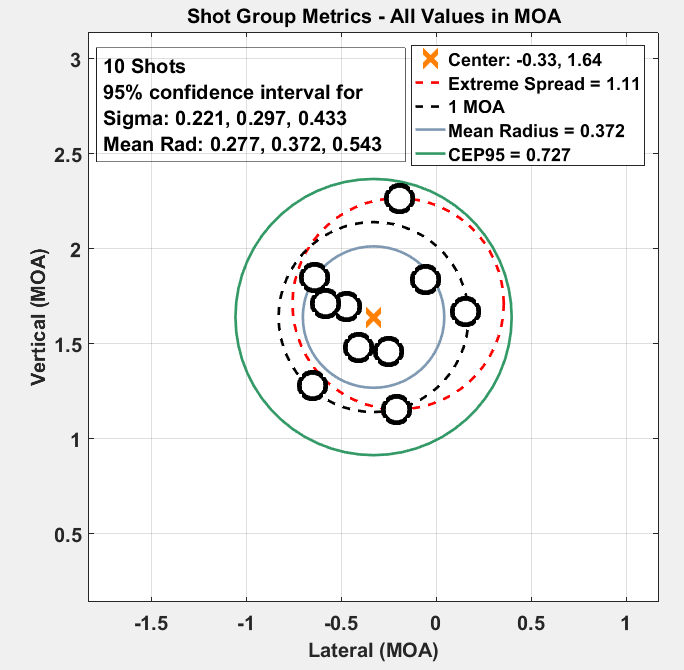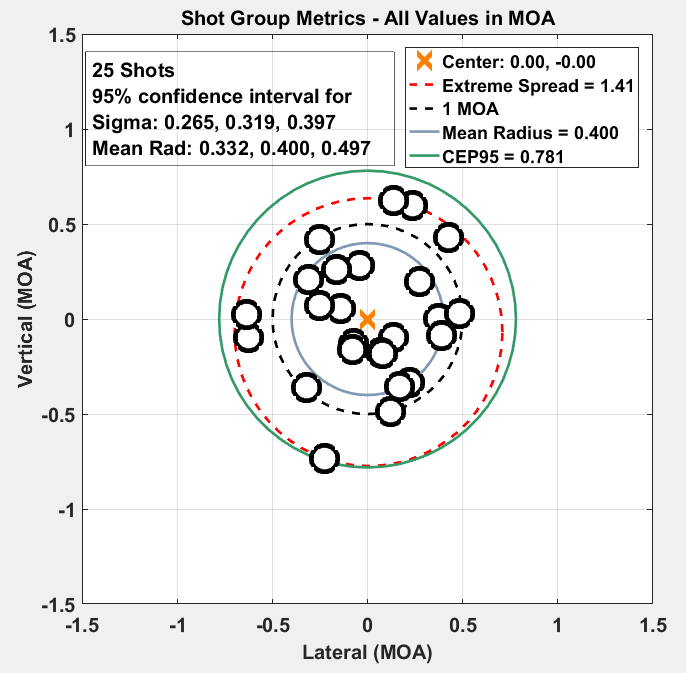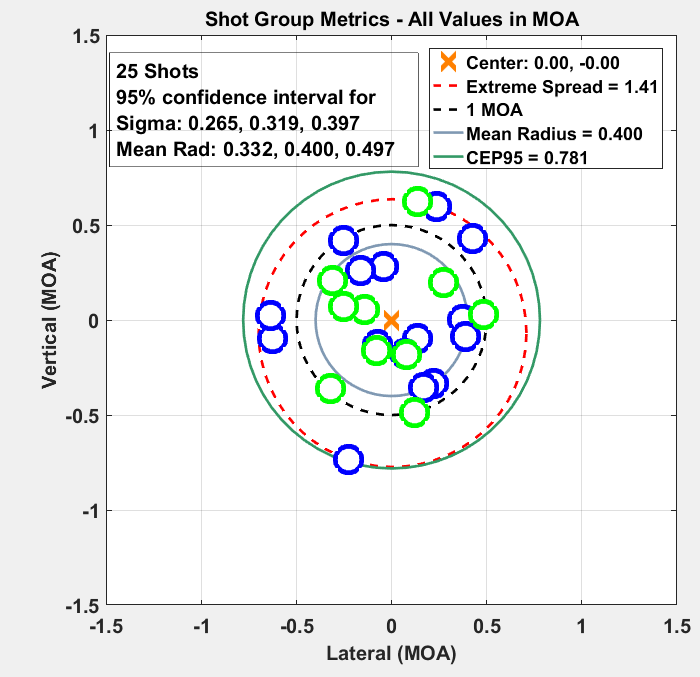Given the scarcity of smokeless rifle cartridge propellant, I think a lot of us have been motivated to try different things. Over the course of the last two years I managed to get a few pounds of Shooters World Precision Rifle powder. Having sat on this powder for some time I recently had a chance to try it with something I hadn’t planned on: the .224 Valkyrie. I have a Palma match coming up at the end of May and decided to give SWP a try in order to preserve my other propellants and to see how it would do.
Quickload predicted excellent muzzle velocity and safe pressures in my Starline cases, that averaged 32 grains of H2O capacity after being fired but not resized. A load of 24 grains under a 90 grain Sierra MatchKing bullet was predicted to give 2700 fps from a 26″ barrel with the rounds loaded at 2.36″ OAL for single round feeding during the Palma match, and 24.5 grains should give 2750 fps at 96% fill and almost 100% propellant burn. Not bad!
All loaded up and ready to go, I benched the 26″ rifle that I built. It has no gas system and I run it as a straight-pull bolt action using a side charge upper receiver and bolt carrier. A 3D printed handle helps work the action.
Right out of the gate, two things were apparent: This ammo has excellent accuracy, but velocity is well below prediction. The 24 grain load ran 2609 fps average and the 24.5 grain load ran at 2650. However this ammo was shooting 1/3 minute groups without trying very hard. I turned to Gordons Reloading Tool because it has a feature that will tune a powder based on real world results. In this case GRT predicted that 24.9 grains of SWP would result in 2694 fps at the same ambient temperature as the previous shooting session. So with the new ammo loaded up, off to the range.
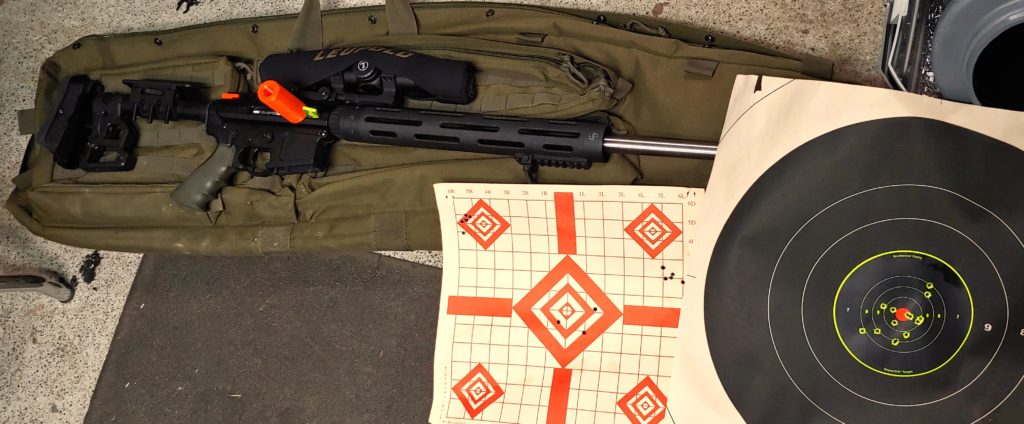
In this case the ambient temperature was about 10 degrees warmer than the last shooting session, and GRT provides a field to account for this difference. The updated prediction was 2700 fps, for a difference of 6 fps. Shooting the ammo on a Lab Radar gave 2715 fps which is close enough in my books! Best of all, the accuracy remained excellent.
I shot on MR targets that were reduced to shoot from 600 yards down to 300 yards, which is the maximum distance at my rifle club. I shot many more X’s than 10’s and I think I’m ready for the Palma match. While the velocity is nothing to write home about for a 1000 yard match, I think the accuracy will play a more important roll, and the velocity is sufficient that all I need to do is make good wind calls in order to shoot well. I’ll report with range results after the match at the end of May.
